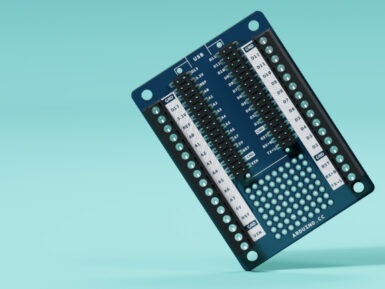
Overview
DFRobot Gravity: analog electrical conductivity meter V2 is specially used to measure the electrical conductivity of an aqueous solution, and then to evaluate the water quality, which is often used in water culture, aquaculture, environmental water detection, and other fields. You may also check Liquid Sensor Selection Guide to get better familiar with our liquid sensor series.
This ec meter product, as an upgraded version of the electrical conductivity meter V1, greatly improves the user experience and data precision. It supports 3~5v wide voltage input, and is compatible with 5V and 3.3V main control board; The output signal filtered by hardware has low jitters; The excitation source adopts AC signal, which effectively reduces the polarization effect, improves the precision, and prolongs the life of the probe; The software library uses two-point calibration method, and can automatically identify standard buffer solution, so simple and convenient.
With this product, the main control board (such as Arduino), and the software library, you can quickly build an electrical conductivity meter, plug, and play, no welding. DFRobot provides a variety of water quality sensor products, uniform size, and interface, not only meet the needs of various water quality testing but also suitable for the DIY of multi-parameter water quality tester.
Conductivity is the reciprocal of the resistance, which is related to the ability of the material to carry the current. In the liquid, the reciprocal of the resistance, the conductivity, is the measure of its ability to conduct electricity. Conductivity is an important parameter of water quality. It can reflect the extent of electrolytes present in water.
Tips:
In order to ensure measurement accuracy, it is strongly recommended to add a temperature sensor to measure the temperature and achieve automatic temperature compensation.
Features:
- 3.0~5.0V wide voltage input
- Hardware filtered output signal, low jitter
- AC excitation source, effectively reduce polarization
- Gravity connector and BNC connector, plug and play, no welding
- Software library supports two-point calibration and automatically identifies standard buffer solution, integrates temperature compensation algorithm
- Uniform size and connector, convenient for the design of mechanical structures
Applications:
- Water quality monitoring.
- Aquaculture.
- Hydroponic & Aquaponic
Get Inspired

A simple BlueTooth (BLE) remote controller for the Arduino Alvik robot, implemented in MicroPyhton

The brand new Nano Screw Terminal Adapter turns up the speed on your prototyping efforts by giving you a fast, reliable way to hook up your boards. This awesome add-on is exactly what seasoned makers have been crying out for, and is now available from the Arduino Store. Let’s take a look at this mini mechanical marvel. A solderless solution With a finished project, you’re likely to make permanent connections to your Nano by soldering it. Even if you’re connecting it using a header strip, the wires, components, sensors and accessories will be soldered, crimped or attached in a permanent way to the controller side of your project. It makes perfect sense to do this, when you’re looking for a reliable connection. The trouble with permanent connections like this is that they’re… well, permanent! Soldering and de-soldering during the design and prototyping stage can become a real chore. And it’s not good for the components or the board itself, either. The Screw Terminal Adapter is what you need. It’s something we’ve been asked for a lot, giving people a way to make robust, fast, easy connections that can be changed just as easily. Easy access to all I/Os The Nano Screw Terminal Adapter features a double row of headers. The Nano drops into the two inner rows, giving you a second, outer set that lets you connecting using jumpers, wires or what have you. Then you have a third row of connectors on either side of the adapter with a screw terminal for each pin. The perfect way to connect wires or components in a reliable, but easily changeable way. It’s never been easier to develop and design a project that with these connection options. There’s even a 9x8 prototyping area with through plated holes for adding extra components, connections or accessories. Of course, this doesn’t have to only be for prototyping. The screw terminal is a long-established, trusted connection option, so there’s no reason it can’t become a








